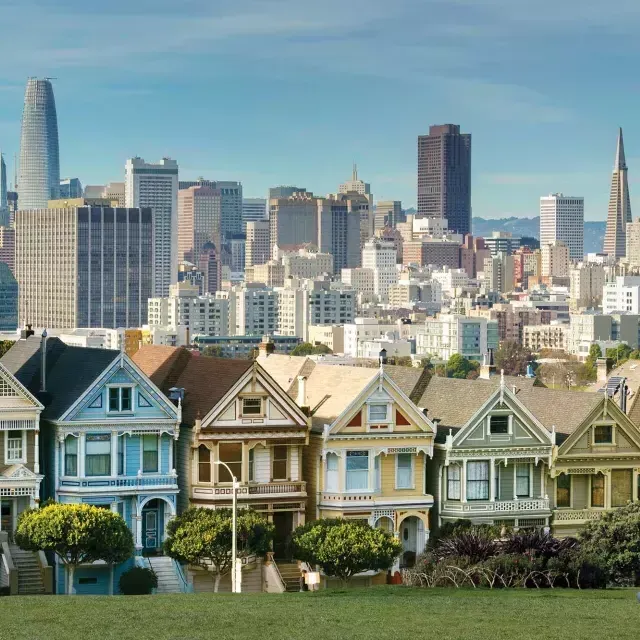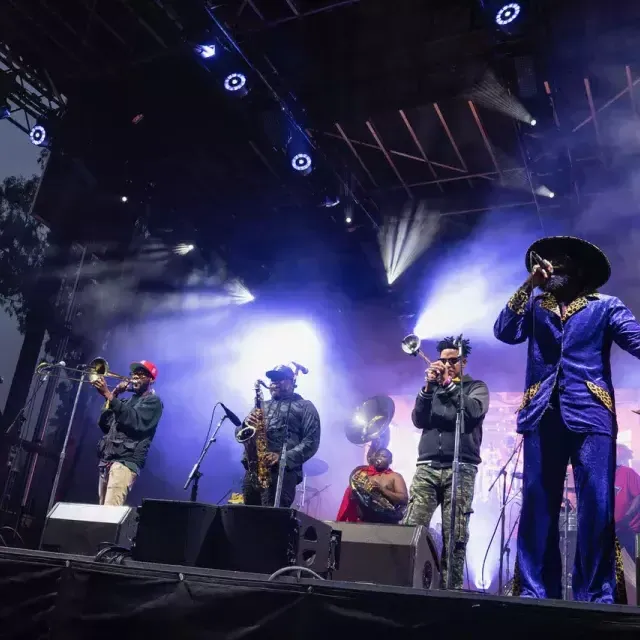
Take A Groovy Grateful Dead Trip Through San Francisco
Celebrate The Grateful Dead with this free self-guided tour following in their footsteps
Haight and Ashbury
All hippie tour itineraries should include a visit to the epicenter of the Summer of Love. Nearly the perfect center of the city, the intersection of Haight and Ashbury Streets was once one of the cheapest parts of town. As San Francisco gained a reputation for acceptance amid the stifling confines of 1950s America, free souls flocked to the Haight neighborhood, which had been popularized by the media as a haven for disaffected youth. In May of 1967 — just before the Summer of Love — Hunter S. Thompson coined the neighborhood's nickname "Hashbury" in "The New York Times" Magazine, but the portmanteau didn't stick around as long as the residents.
The Haight-Ashbury area became known as a mecca for artists and their go-with-the-flow followers. It was not uncommon to run into musicians like the Grateful Dead and Janis Joplin as well as members of psychedelic rock outfits such as Jefferson Airplane and Quicksilver Messenger Service, many of whom lived within a few blocks of one another. "Wandering around Haight, you’d end up bumping into everyone you wanted to find and — as the song goes — strangers would stop strangers, just to shake their hand," says Grateful Dead drummer Bill Kreutzmann.
The Grateful Dead House
Musicians like the Grateful Dead were the heart of the Summer of Love. The group's original members—Jerry Garcia, Phil Lesh, Bob Weir, Bill Kreutzmann, and Ron "Pigpen" McKernan—lived in the purple Victorian house located at 710 Ashbury St. from 1966 until 1968. Originally a boarding house, the rooms mysteriously began to open up just when the band needed to vacate their residence north of the Golden Gate, and they ultimately took over the entire building. Mere blocks from the Haight-Ashbury junction, the house was the site for many shenanigans, including an infamous 1967 drug bust. The Dead house gained icon status from this as well as photos of the group taken on its front stoop, which were circulated widely. Although it is home to someone else now, visitors can still pose for photos outside the front gate at the Grateful Dead house and see Deadhead art on the sidewalk outside.
McLaren Park
McLaren Park is about 20 minutes south of Haight-Ashbury, but the drive is worth it because of the close connection to Jerry Garcia. That's because it's next to the Excelsior District, where he grew up. In the middle of this park is the Jerry Garcia Amphitheatre, which is a Greek-style outdoor concert venue. It's also the site of Jerry Day, which takes place every August. Jerry Day features performances by tribute bands whose music would make Jerry proud.
The Presidio
Once a military post, the Presidio is now a major part of the Golden Gate National Recreation Area. It has everything from hiking trails and historic buildings to a social club and even The Walt Disney Family Museum. But what's most important to Grateful Dead fans is the fact that Jerry Garcia spent nine months here when he was in the U.S. Army in 1960. This information might surprise you, but what won't is that he went AWOL several times and was court-martialed as a result.
The 400 Club in Rincon Hill
Continue your tour with one of the places that influenced the Grateful Dead. The effect of the 400 Club in Rincon Hill is evident when examining the Dead's fondness for debauchery and songs of the seafaring life. ("Wharf Rat," anyone?). Located at 400 First Street, the 400 Club was a bar owned by Jerry Garcia's parents after their previous establishment, Garcia's, shut down. The 400 Club's proximity to the docks meant it was in a rough-and-tumble joint, frequented by sailors. Jerry grew up hanging out with drunken sailors while his parents tended the bar—not your average upbringing, but then again, no one ever called the Grateful Dead's bandleader average.
City Lights Bookstore
City Lights' connection to the Grateful Dead dates back to before the band was even together. In the 1950s, the Beatniks claimed North Beach as their stomping grounds, often congregating near City Lights Bookstore, which published such infamous literature as Allen Ginsberg's extended poem "HOWL." Grateful Dead bass player Phil Lesh mentions frequenting City Lights as a teenager in the early '60s, just before the hippie movement exploded in San Francisco.
Nowadays, you can find literature about the Grateful Dead and the Summer of Love (as well as many other counterculture and mainstream titles) at City Lights. Grab a tome and hole up inside the store while you reminisce about the Summer of Love more than 50 years on.








